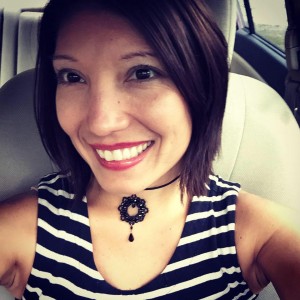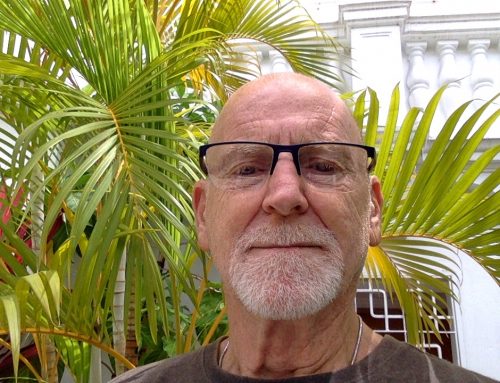When I was two years old, I began having “episodes” – bouts of extreme energy and activity with no discernible cause. I would cry to my parents, “Make it stop! Make it stop!” My parents felt helpless, unable to fully understand what I was asking them to do, given the limited descriptive abilities of a toddler. They took me to the pediatrician, whose diagnosis was an allergy to red food dye. Living in rural Georgia in the early 1980s, mental health wasn’t talked about. Especially not when it involved a two year old. So, with no other explanation and no known family history of mental health conditions, I spent the next two decades avoiding red food dye and hoping for the best. My episodes eased as I grew up, with both the increased ability to express myself and with active involvement in gymnastics, which served as an energy outlet
Fast forward to my early twenties. My “episodes” resurfaced to the point that I sought professional help. I went to several therapists, none of whom worked out. One continued to insist that it was tied into my childhood and my parents must somehow be responsible. The second strongly resembled my future father-in-law who, while I liked a great deal, I didn’t feel comfortable confiding in My episodes had gotten to the point where my ex-husband would, at my request, hold my torso so that I could punch and kick in the air to relieve the energy that I felt would combust inside of me if I didn’t find some sort of release. Still, I couldn’t get any sort of a medical diagnosis.
Just before my thirtieth birthday I began having what I thought to be constant panic attacks. When I could take no more, my then-fiancé (I’d gone through a divorce) took me to the ER. I had begun taking mild antidepressants three months prior, prescribed by my GP, and for a while they helped. No longer. The ER doctors suggested I stay overnight. The hospital didn’t have room but a “sister” hospital did – they were part of a reputable chain in the area and I was desperate for help. I agreed. My fiancé asked if I was sure, and I assured him I was. They made me sign a whole mess of forms without much explanation – forms that I didn’t understand in the midst of this episode. They asked me if I was suicidal. No. They asked me “If you were going to kill yourself how would you do it?” I mumbled something so they would stop asking. I thought it was a hypothetical. I was labeled a suicide risk, strapped me to a gurney and put me in an ambulance – standard procedure, I was told.
When we arrived, confusion ensued. This wasn’t a branch of the same hospital. This was an inpatient facility dedicated to mental illness. I hadn’t agreed to this! Or so I thought. They swiftly took every possession I had on me. I was told I visiting hours were x days and y times. I protested. They assured me that I wouldn’t be required to stay more than two days since I’d been a “voluntary” admittance. Two days! I asked if I could change my mind. They said I could go back to the ER, but if the ER decided to admit me non-voluntarily I’d have no control over when I left. I cried and clung to my fiance. He said I’d be ok, and promised to come visit me every chance he could (he did).
Inside the hospital, I was evaluated and put on more antidepressants. I felt worse. My family called the therapist I’d seen after my divorce. She advised them that the best plan was to wait out the two days calmly and agreeably. When I finally saw her in person, and stated that I was feeling worse on the anti-depressants, she told me I didn’t have depression. Or rather, strictly depression. I was diagnosed with rapid cycling cyclothymia, a condition that’s similar to bipolar disorder but generally milder. Instead of long bouts of depression and full manias, I have shorter depressive episodes and hypomanias – which it turns out were responsible for my trip to the ER. I can cycle up to several times a day, though usually it’s not quite that often. I was weaned off the antidepressants and placed on mood stabilizers.
I am now on a regular dose of mood stabilizer, as well as an antihistamine that doubles as anti-anxiety. I go to therapy at least once per month, more if I feel it’s needed. I haven’t been back to the ER or hospital. I now understand my condition enough to recognize the cycles and work through them, even if working through them means laying low until they’re over.
I have learned a lot on my journey. I’ve learned that you need to be persistent. When you know something is serious, don’t let others downplay it. Nobody knows your body, or your brain, better than you. Do whatever you have to in order to make your voice heard.
I learned how important it is to have a support network who will fight for you when you are unable to do so yourself. This can get you through the darkest times. I learned that I need to have a plan in place and shared with loved ones in case something similar happens again, so that nobody has to guess at what I might want and need.
I learned that having a therapist you can trust makes a world of difference, and that you shouldn’t “settle” for one. As with any other relationship, you need and deserve someone who respects you and is working towards a common goal.
Most importantly, my time in the hospital taught me that the other people in there were just like me. People who were mis/undiagnosed, who were given the wrong medication. People excessively stressed by work until anxiety forced them to get help. People from all types of companies, positions, backgrounds. People suffering from severe grief. People suffering from post traumatic stress after trauma. Nobody resembled anything akin to what the media portrays. They were not violent or unsafe or nonsensical. They looked, walked, talked, ate like you and me. And despite my desire to not be there, the programs offered were good. I didn’t like the particular therapist on site, but I saw the benefit of the group sessions and writing activities, and met a couple of nice nurses and staff who treated us all like humans, whom I could talk to as if I’d ran into them on the street.
Mental health disorders can affect anyone. They don’t discriminate based on age, gender, ethnicity, income, or any other socioeconomic factor. They affect an organ of the body just like so many other illnesses do. They are not a choice. They are not a bad attitude. We aren’t “crazy” while everyone else is “normal.” Someone with a heart condition or diabetes or asthma may need a combination of doctors and medication to feel their best and live their healthiest, and would seek help without feeling ashamed. My condition is no different. I live a successful life. I run my own business and work a part time job. I’ve sat on the board of numerous industry organizations. I’m in a loving relationship with an incredible man, and while it took me a few tries to find this steady state (the relationship with aforementioned did not work out in the end), I have found someone who loves me condition and all, who doesn’t feel I need to “change me” to be more like everyone else. Don’t ever believe these things are unattainable because of your condition. They absolutely are. So many of us are living proof. The more we raise awareness, educate people about mental health, and share our stories, the closer we come to eliminating stigma, and it’s why I’ve decided to dedicating so much of my time to doing just that.
 Maya Northen is a business owner, hospitality industry professional, and mental health advocate. Since being diagnosed with a rare mood cycling disorder at the age of 29, she taken on the mission of sharing her story, offering peer support, spreading awareness, and eliminating stigma surrounding mental health disorders and other chronic, “invisible” illnesses. Maya shares her journey through her blog, Lilies and Elephants, and runs an online peer support group called Mood Disorders Support System through Facebook. She is an active participant in her local chapter of the American Foundation for Suicide Prevention (AFSP), and participates in the organizations Out of the Darkness Overnight Walk for fundraising and awareness each year.
Maya Northen is a business owner, hospitality industry professional, and mental health advocate. Since being diagnosed with a rare mood cycling disorder at the age of 29, she taken on the mission of sharing her story, offering peer support, spreading awareness, and eliminating stigma surrounding mental health disorders and other chronic, “invisible” illnesses. Maya shares her journey through her blog, Lilies and Elephants, and runs an online peer support group called Mood Disorders Support System through Facebook. She is an active participant in her local chapter of the American Foundation for Suicide Prevention (AFSP), and participates in the organizations Out of the Darkness Overnight Walk for fundraising and awareness each year.








Leave A Comment